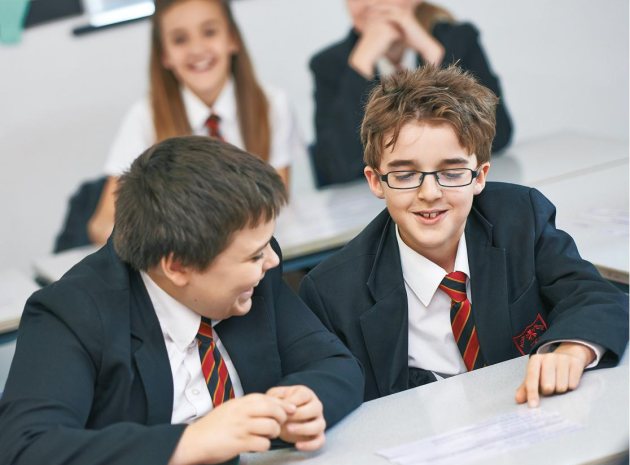Encouraging reluctant writers to understand, value and engage with the process of writing is a familiar struggle in both primary and secondary classrooms. This year my department and I have been exploring a variety of different ways to engage students in this process more fully, and not to regard a piece of extended writing as ‘finished’ without first actively seeking ways to improve it. If students are to become mature and confident writers, they need to be willing to take risks, to experiment with language and syntax. And yet for some, this is a barrier – they cannot see beyond ensuring their punctuation and grammar are correct. Of course these elements are important, but they can be secured later in reflection and redrafting. Often, students will go for the safe and the obvious, rather than what they are actually imagining, because they have a fear of failure. As a school we follow the Growth Mindset approach, where FAIL merely means ‘first attempt in learning’:
all students can and will succeed if they show resilience. The lesson that follows was taught at the beginning of a scheme of work on descriptive writing, and was designed to approach a standard descriptive writing task in an unusual and novel way. The primary focus was engagement of all students.
WHY TEACH THIS?
Creative writing is an opportunity for students to let their imaginations run wild. But, whilst some pupils relish the freedom creative writing gives them, others can be reluctant or even afraid to commit pen to paper. It is important students feel comfortable taking risks in the classroom in order to unlock their creative potential. Sometimes, capturing ideas through a fun activity – rather than getting hung up on the technicalities of writing – is important, so that all students feel they can succeed.
STARTER ACTIVITIES
Give students a piece of A4 paper and ask them to fold it in half from the top down (vertically, not horizontally), and then in half again. Explain to students they are going to play the game Consequences. Each student draws a monster’s head in the top quarter of his paper. Encourage them to be as imaginative as possible. Students fold the paper over and pass it clockwise. In the next quarter, students draw a monster’s body and arms: again, the paper is folded and passed clockwise. This is repeated twice more: in the third quarter the monster’s legs are drawn, and in the final section the monster’s feet. The paper is passed around for a final time and students unfold the completed sheet to see their collective monster. Cue lots of hilarity.
MAIN ACTIVITIES
Students write a description of the monster they have in front of them. This is one point where the teacher can intervene and elicit the different descriptive techniques students should include. However, because our focus was initially on students’ engagement, we gave no input here and simply encouraged students to write freely. Keeping their pictures hidden, students are then paired up with someone from the other side of the classroom. Sitting back to back, Student A reads her description aloud and Student B draws a monster based on what he has heard. They then switch roles. Once both students have finished, they compare their partner’s drawing with the original. Cue more hilarity.
Inevitably, there will be huge discrepancies between the two pictures. In our lesson, once the laughter and incredulity had faded, students were asked to reflect on why this was and concluded for themselves there were two primary reasons: a lack of detail and a lack of precision with their vocabulary choices.
Using this as a starting point, the class agreed upon a success criteria for effective descriptive writing, and used this to support them with the redrafting of their descriptions. With my predominantly male group, an element of competition is always effective: a reward for the student whose description resulted in the most accurate drawing.
Finally, then, students should share their redrafted piece with a different partner, again sitting back to back with original drawings out of sight. As before, students listening must draw a picture of the monster based upon what they have heard. In almost all cases, the redrafted, improved written descriptions should lead to greater similarities in the drawings produced – much to the students’ delight.
Still with their partners, students peer assess each other’s work, using the success criteria as a guide.
HOME LEARNING
Ask students to find a picture of a person and write a short (50-100 word) description of him or her on a separate piece of paper. Next lesson, stick the pictures and descriptions up on the classroom walls and ask students to match the two together.
SUMMARY
To conclude, students should reflect on the activity and, in their exercise books, write their personal list of Top Tips for Descriptive Writing. Because students create the list for themselves, the fear or uncertainty that can often surround creative writing tasks, and act as a barrier to student engagement, is largely removed: these things are tangible and will have already been seen to be effective. This list can also serve as the basis for future descriptive writing activities. In subsequent lessons, the class and I explored different Top Tips in more detail, giving the impression it was they who had established the course of the lessons, rather than me.
ABOUT OUR EXPERT
Sarah Glover is an Assistant Principal (teaching and learning) and Head of English at Ridgeway School, Plymouth. Prior to this Sarah taught in Camden, London for 8 years.ww









